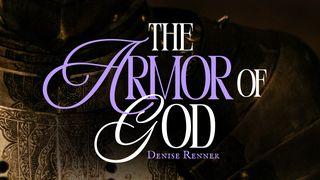Delve Into The ProphetsSample

DAY 6 – HOSEA PART II
The book of Hosea has two main parts. The messages in the first and much shorter part seem to have been delivered when Jeroboam II was still alive. They describe a period of prosperity, speaking of “the grain, the new wine and oil . . . the silver and gold.” They refer to God’s judgment on the house of Jehu, Jeroboam’s dynasty, as a future event. This part of the book tells how God commanded Hosea to marry Gomer, a woman who was unfaithful to him. She represented the way that Israel, like an adulterous wife, was guilty of unfaithfulness to the Lord. Gomer bore several children to Hosea, and God told him to give them symbolic names.
The first was called Jezreel, to show that God would repay the blood the nation had shed: Jezreel was the place where a man named Jehu began the cycle of assassinations in Israel. The second and third children were given names that showed how God had rejected the nation: Lo-Ruhamah means “not loved,” and Lo-Ammi means “not my people.” But when Hosea, at God’s command, publicly took his wife back after her unfaithfulness, he demonstrated that God’s purposes were to bring Israel back to himself. Through Hosea God promised, “I will say to those called ‘Not my people,’ ‘You are my people’; and they will say, ‘You are my God.’” And so the prophet’s own life provided a picture of God’s intentions toward the wayward kingdom.
The second and longer part of the book contains oracles that were delivered in the period of instability and decline after Jeroboam. These oracles are grouped loosely together. They refer to the series of assassinations: “They devour their rulers. All their kings fall.” They describe the constantly shifting foreign policy: “Ephraim is . . . easily deceived and senseless—now calling to Egypt, now turning to Assyria.” And they allude to the way the Assyrians forced the last king off the throne: “Where is your king, that he may save you?” The earlier oracles in this section are generally more concerned with the fertility cult, while the later ones concentrate more on the history of God’s relationship with Israel.
The kingdom’s main problem, which Hosea speaks to in both parts of the book, was that its people were finding so much security in their institutions (the worship system and the monarchy) that they’d become spiritually complacent. The solution to this problem was for the Israelites to go back to the days before they could find false shelter under these institutions. They needed to go back to the days in the wilderness, when they lived in direct relationship with God and recognized their complete dependence on him. This uprooting could only be accomplished through the drastic measure of conquest and exile. But then the Lord and his “bride” could begin their relationship anew, and the bride could recognize the true foundations of her “marriage” covenant. Once this had been accomplished, there could be a happy return from exile. Hosea foresees this return in the hopeful oracles that are placed right alongside his other oracles of woe and impending judgment. As hope and doom alternate, God, speaking through the prophet, dramatically portrays himself wrestling with his own heart, as he both threatens and pleads with the kingdom of Israel in the last years before its exile.
PRAYER: Thank You, Lord for being faithful to me. Help me to be faithful to you.
Scripture
About this Plan

The Old Testament of the Bible is broken into three major sections, the second of which is known as the Prophets. If you didn’t know that, imagine all of the other interesting things you’ll learn in this reading plan as you explore the purpose, context, and background of this fascinating and unique part of God’s Word.
More
We would like to thank Biblica for providing this plan. For more information, please visit: http://www.biblica.com
Related Plans

Romans 8: Life in Christ by the Spirit

From Dugouts to Destiny: Trusting God in Every Season

The Armor of God

God Is on Your Side

The Girl on the Bathroom Floor

Pentecost and the Work of the Spirit

You Have a Voice

Who Is Jesus?

The Creator's Battle: Winning the Inner War for Your Art
